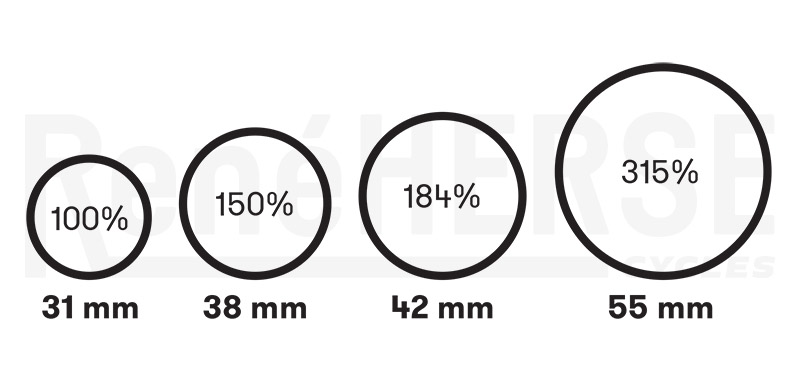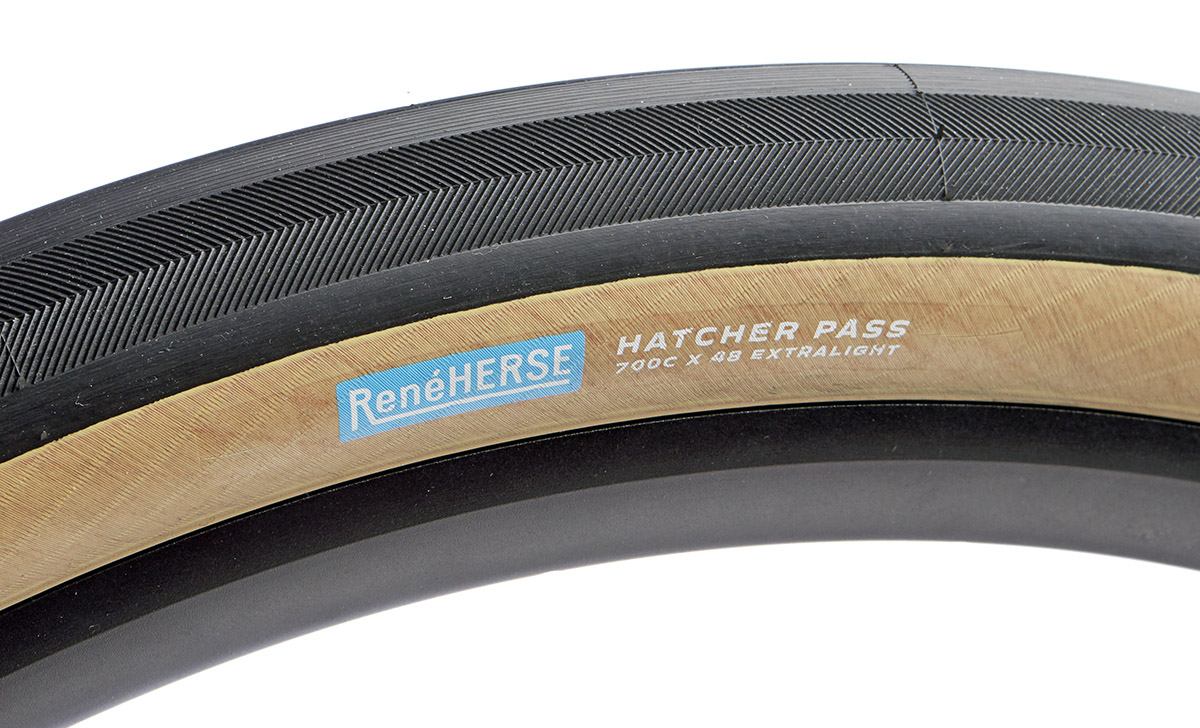How Wide is Right for Me?
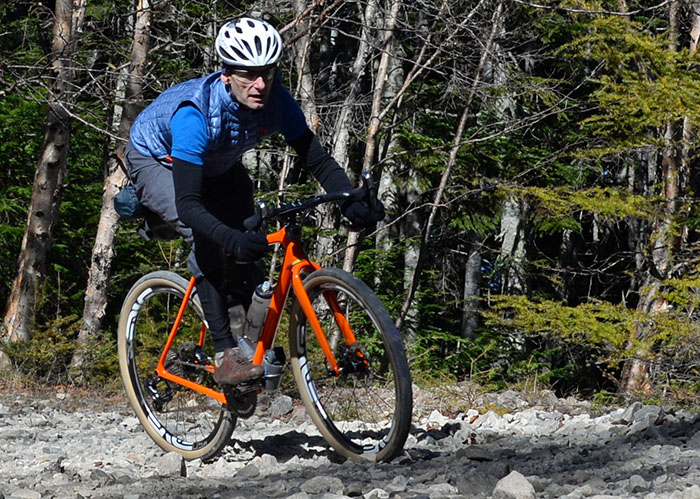
Our ideas of what is a performance bike have changed a lot in recent years. The most exciting bikes of the moment are all-road bikes like the Open U.P. – a carbon race bike that accepts 50 mm-wide tires!
Not too long ago, every performance road bike had 700C x 23 mm tires. Now you can choose how wide you want your tires to be, and even – thanks to disc brakes – which wheel size you want to use! For Bicycle Quarterly’s test, we rode the Open with 51 mm-wide tires, but our second tester, Nate King, raced his Open with 44 mm tires. Which is better? Here’s a brief overview how tire size affects your bike’s speed, comfort and other factors. That way, you can choose how wide is right for you.
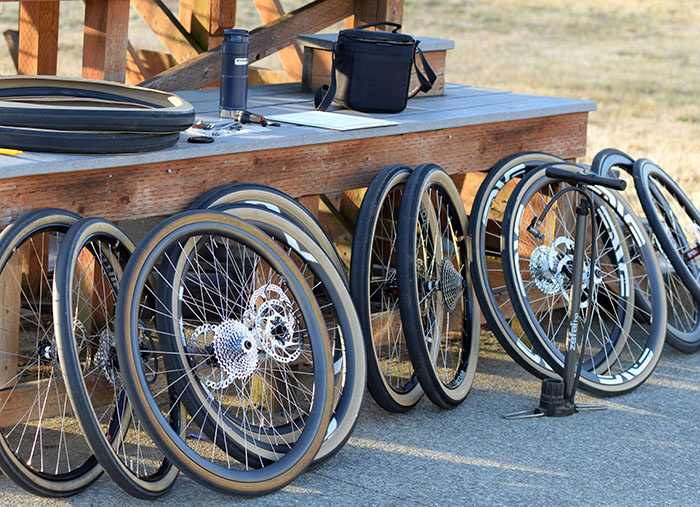
Let’s first talk about some fundamentals: Wider tires don’t roll slower than narrow ones. Test after test has shown: In a real-road scenario, wide tires don’t roll slower than narrow rubber.
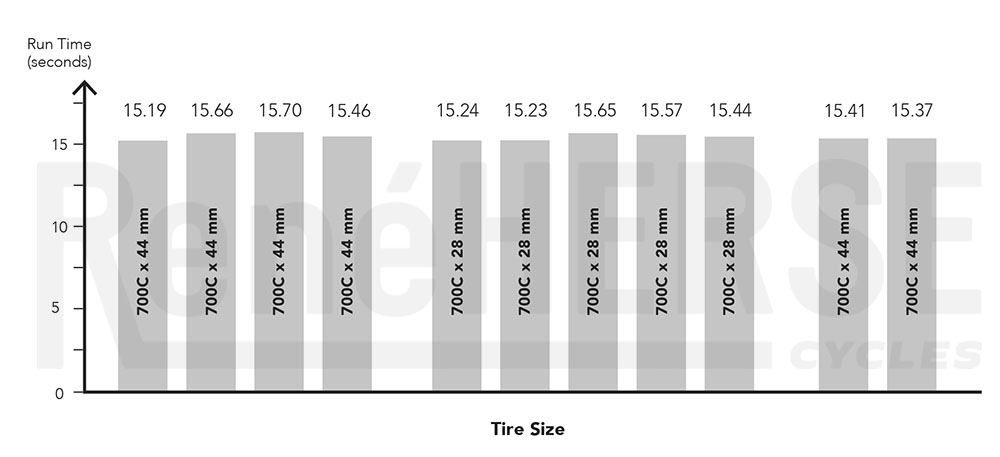
In the test above, run on real roads with a rider on the bike, you can see that there’s no speed difference between 28 and 44 mm tires. Why so many test runs? It’s standard practice for scientific research, so you can check your results.
We tested at 22 mph, so this factors in the air resistance of the wider tires. And we tested on very smooth asphalt – where wider tires are neither faster nor slower. On rougher roads, there is no doubt: Wider tires are faster because they glide over irregularities that make a bike on narrow tires bounce and vibrate.
Other tests have shown that even 54 mm-wide tires aren’t significantly slower than narrower ones – provided they use the same supple casings. Of course, old beliefs die hard, and there are still plenty of cyclists who think that narrower tires and higher pressures are faster.

Pro racers now race on 28 or even 30 mm tires. Tadej Pogačar, winner of the Giro d’Italia and favorite for the Tour de France this year, runs his 28 mm tires at just 57 psi (3.9 bar). If that works for him, it’ll work for you as well.
To summarize all this research: Narrow tires (<25 mm) are slow. Above 25 mm, the width of your tires are won’t change your speed on smooth pavement (at least up to 55 mm wide tires). On rough surfaces, wider tires are faster.
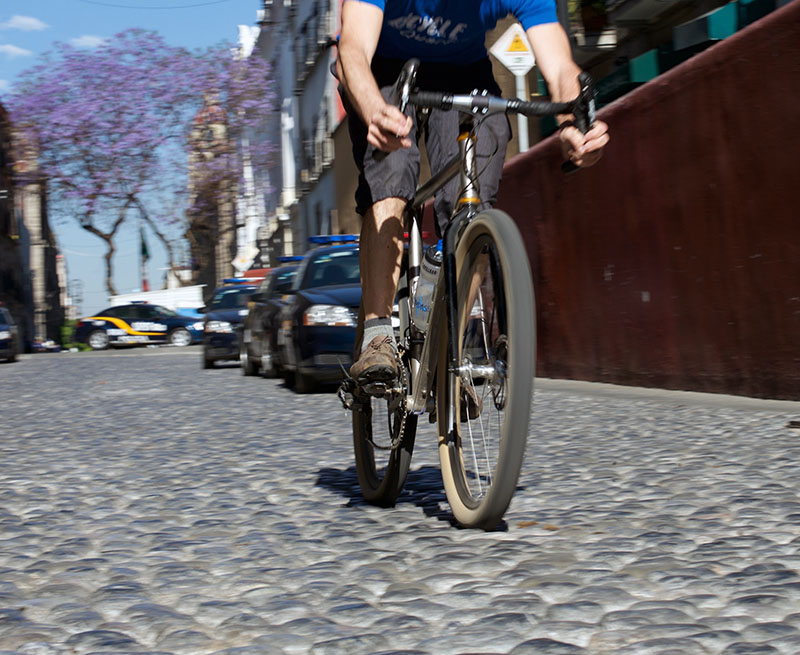
That doesn’t mean you can just slap any wide tires on your bike and expect it to go fast. What will change your speed is how supple your tires are: Tires with high-performance casings are faster, more comfortable and offer better traction, regardless of their width. If you choose heavy, reinforced ‘touring’ or ‘gravel’ models when you switch to wider tires, you’ll be disappointed – they’ll roll slower than racing tires because of their sturdy casings, not because of the extra width.
So we know that supple casings are important, and that width doesn’t matter. What size tires should we run then? Is wider always better? And what about wheel size?
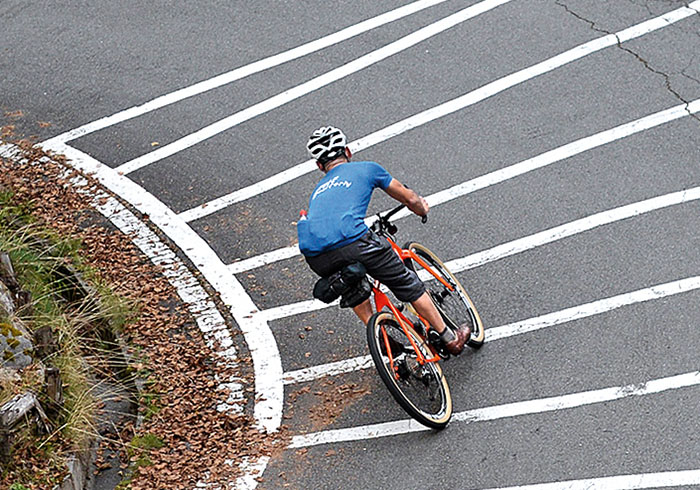
Wider tires offer more cornering grip. This is true for racing cars and motorbikes as well as bicycles. On bicycles, there are two reasons for this:
- More rubber on the road gives you more traction.
- Wider tires are inflated to lower pressures, which means that they stay in contact with the road. If your tires don’t bounce over small irregularities in the pavement, they don’t loose traction for split-seconds.
If you like to corner fast, you want the widest tires possible. Even on smooth pavement, the difference between 30 mm and 38 mm-wide tires is very noticeable. On rough surfaces and especially on gravel, it’s really no contest.
Wider tires also suffer from fewer flats because they run at lower pressure. A soft tire deflects when it hits a sharp object. A hard tire punctures. Imagine somebody stepping on your toes with a stiletto heel (high pressure) or a running shoe (low pressure). You know which will hurt more…
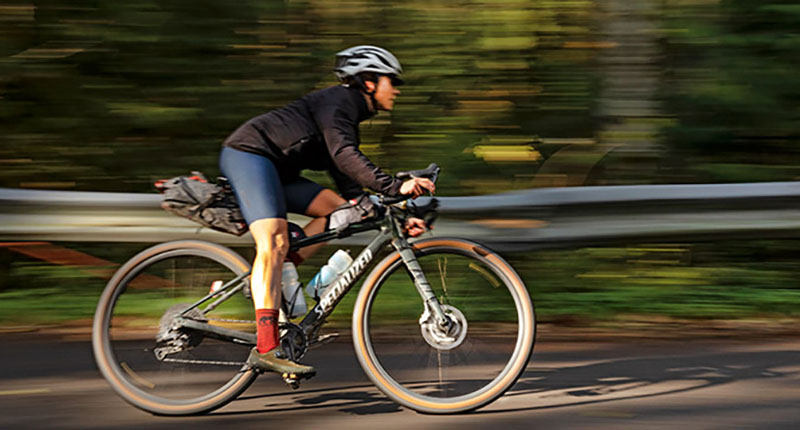
Wheel size is another consideration. You often hear that larger wheels roll faster, but there is no evidence that this is true. All tests show that among the popular wheel sizes, there’s no speed difference.
Wheel size doesn’t affect your speed, but it does affect how your bike handles. We once tested three bikes that had different wheels sizes – 700C, 650B and 26″ – but otherwise were identical (same trail, wheelbase, BB height, etc.). We found that wheel size greatly influences the handling of your bike. Larger wheels make the bike more stable, and so do heavier wheels – because of the rotational inertia.
Most bikes today use 700C wheels, and that’s a good choice for most riders. However, if you prefer the nimble handling of a road bike, but want to run wider tires, you may prefer smaller 650B wheels. The smaller wheels make it easier to lean your bike into corners and adjust the line in mid-corner. And as mentioned above, smaller wheels don’t give up any speed.
Let’s a look at a few tire sizes that I enjoy riding, with their pluses and minuses:
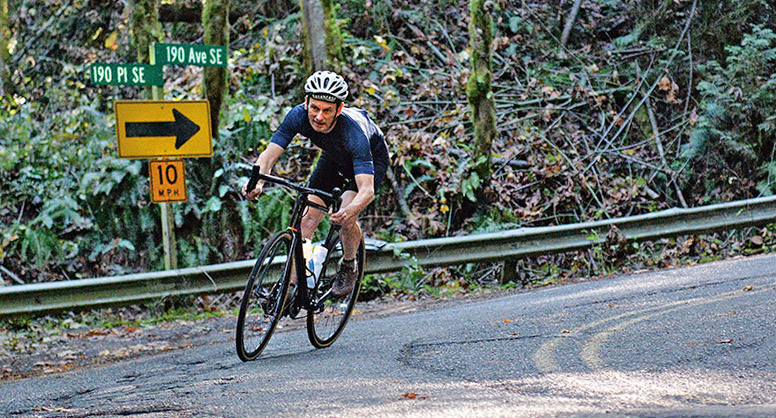
31-32 mm wide
- Most modern road bikes can fit 32 mm tires, and that is a very good thing.
- You still get the ‘connected-to-the-road’ feel that makes road bikes so much fun, without harshness, even on rough pavement.
- With 31-32 mm tires, road bikes are fast and fun not only on smooth highways, but also on backroads that are much more scenic (and have less traffic).
- In a pinch, you can take 31-32 mm tires on gravel, too – even if it’s just a detour around a construction site.
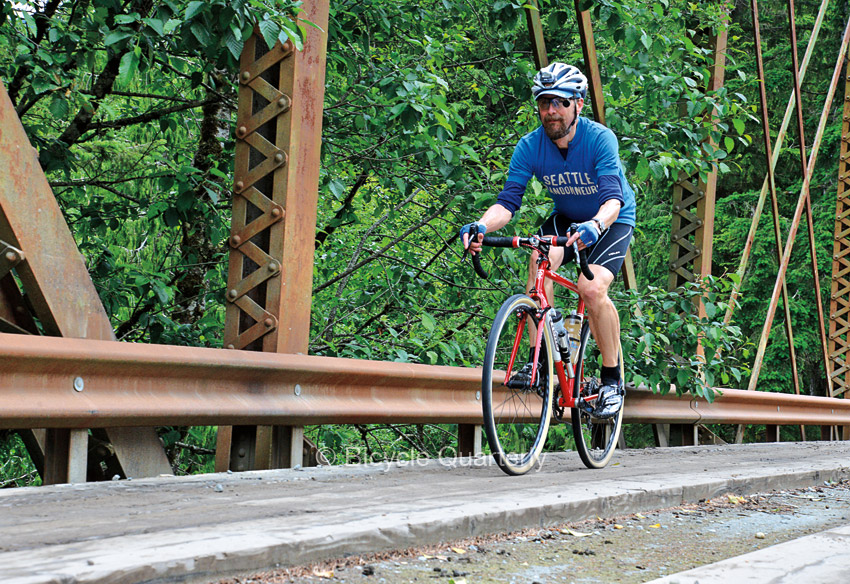
38 mm wide
- 38 mm tires are great for pavement and occasional gravel riding.
- There’s less risk that your tires will get caught in small cracks in the road: Wider tires are safer, too.
- On gravel, 38 mm tires allow you to relax without zig-zagging around stones that could damage narrower tires.
- You don’t give up any speed, and very little road feel.
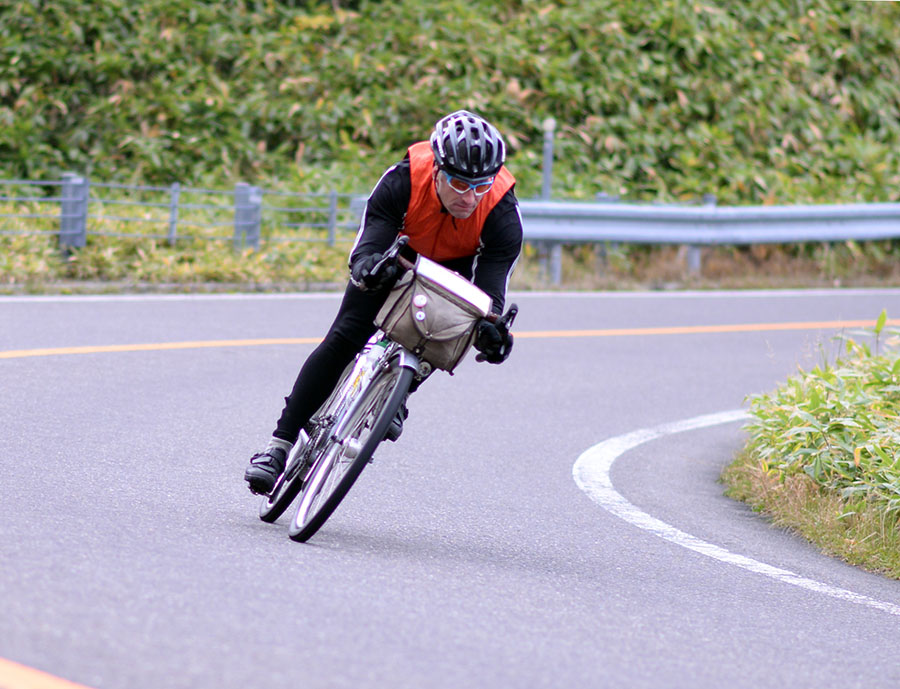
42 – 44 mm wide
- Adding 4 mm to the width of your tires gives you added plushness – compared to 38 mm, you’ve increased the air volume by 22%.
- In exchange for the extra cush, you lose a little bit of connection to the road. To me, that isn’t a big loss, and I enjoy the greater traction and go-almost-anywhere capabilities of the wider tires.
- The cornering grip of 44 mm tires is a completely new experience.
- 42-44 mm tires are perfect for riders who like to push the limits on pavement, as well as those who regularly explore gravel roads.
- Most gravel racers today choose 44 mm tires, unless the course is very rough.
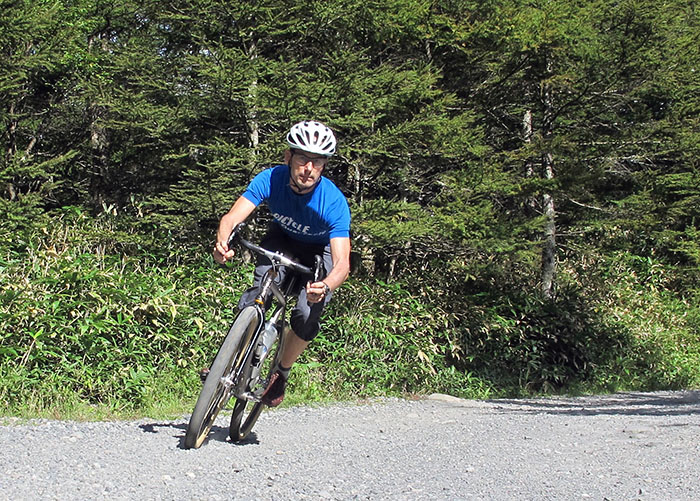
48 – 55 mm wide
- Now we are getting into some seriously wide tires for a road bike! A 55 mm tire holds twice as much air as a 38 mm tire.
- Tires this wide change their feel depending on the pressure you run:
- With the tires inflated to ‘firm’ pressure (31 psi/2.2 bar; for a 185 lb/84 kg rider-and-bike weight), your bike feels like a road bike. The wide tires make more noise as they roll over the pavement, but otherwise, they feel similar to narrower tires.
- Letting out some air and reducing the pressure to ‘soft’ values (26 psi/1.8 bar for the rider above) changes the bike completely. Now it is super-plush. The tires still have enough air so they won’t collapse under hard cornering. At this pressure, the tires are ideal for rough gravel. The downside is that you can feel the ‘suspension’ when riding out of the saddle.
- To adjust tire pressure for your weight, check the Rene Herse Tire Pressure Calculator.
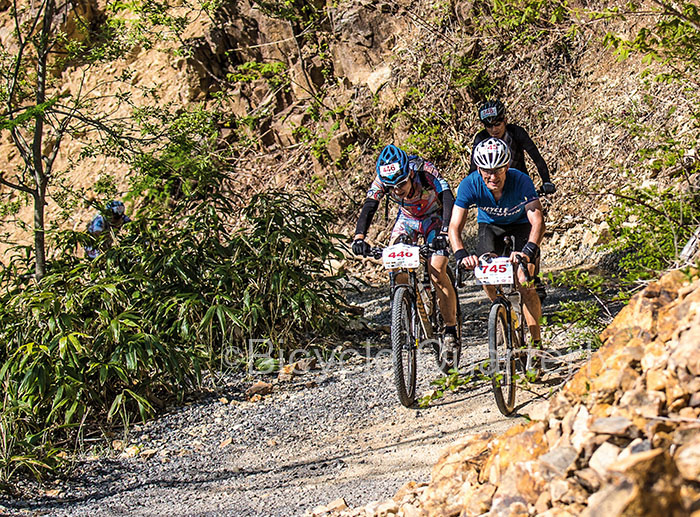
How about tires wider than 55 mm? That’s getting into mountain bike terrain. 55 mm tires already are quite wide: They have the same air volume as 2.3″ mountain bike tires – they just don’t have knobs on the shoulders, so they measure out a bit narrower. Below is a comparison of the air volume of the tire sizes mentioned above (to scale).
Going from 31 mm to 38 mm gets you 50% more air volume—more comfort, more grip and less risk of flats. Going up to 55 mm, you have more than three times the air volume of the racing tire. A tire that wide can take you almost anywhere.
Summary:
- If you want to channel your inner road racer, 31-32 mm tires are a great choice. Anything narrower only adds harshness, with no gains in speed or road feel.
- If your bike can take wider tires, but you still want to feel connected to the pavement like a good road bike, I recommend 38 mm tires. You gain comfort and safety without losing speed.
- If you prefer better rough-road performance and even more cornering grip, choose 650B x 42 mm. You lose a little of the connection to the road, but during hard cornering, you actually get more, not less, feedback of how much grip you have in reserve.
- If your rides include a lot of gravel, you’ll be happiest on 48 or even 55 mm tires. You can push hard without worrying about bottoming out or cutting a tire, and you have more traction, too. On pavement, there is a little more tire roar, and the bike’s feel is more sensitive to tire pressure. On the plus side, the grip in paved corners will blow your mind.
Let’s not forget that the quality of your tires is more important than the width. A supple, high-performance tire is always going to be much faster and more comfortable than a heavy and stiff budget model. Fortunately, wider tires last a lot longer, because they spread the wear over a greater surface area. That means you can splurge a bit on high-performance tires without breaking the bank.
That’s why Rene Herse Cycles has pioneered supple high-performance tires in all widths, not just for narrow road models. Because we want to experience the speed and comfort of supple tires everywhere we go, not just on smooth roads.
Further reading:
- The All-Road Bike Revolution, our book about the science that has revolutionized bicycles over the last 15 years.
- The Rene Herse Tire Pressure Calculator is based on hundreds of measurements of real-road rolling resistance.
- Rene Herse tires offer supple casings in all widths, with a choice from ultra-fast Extralight casings to ultra-tough Endurance casings.
Photo credits: Jered Gruber (Photo 3), Toru Kanazaki (Photo 9), Natsuko Hirose (Photos 1, 4).


